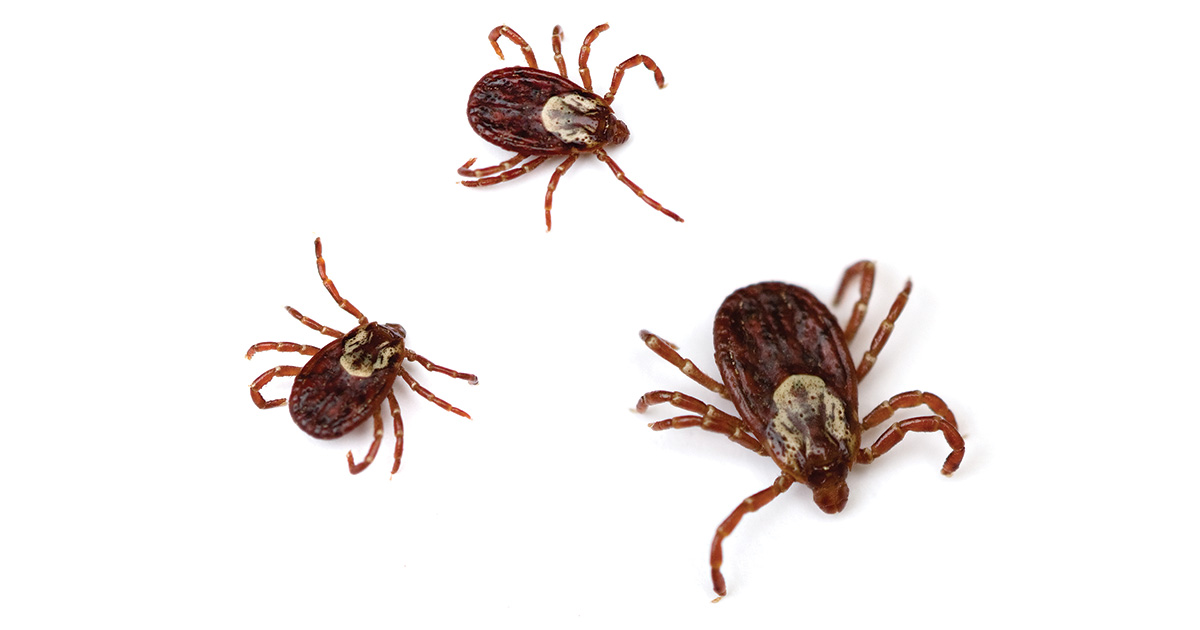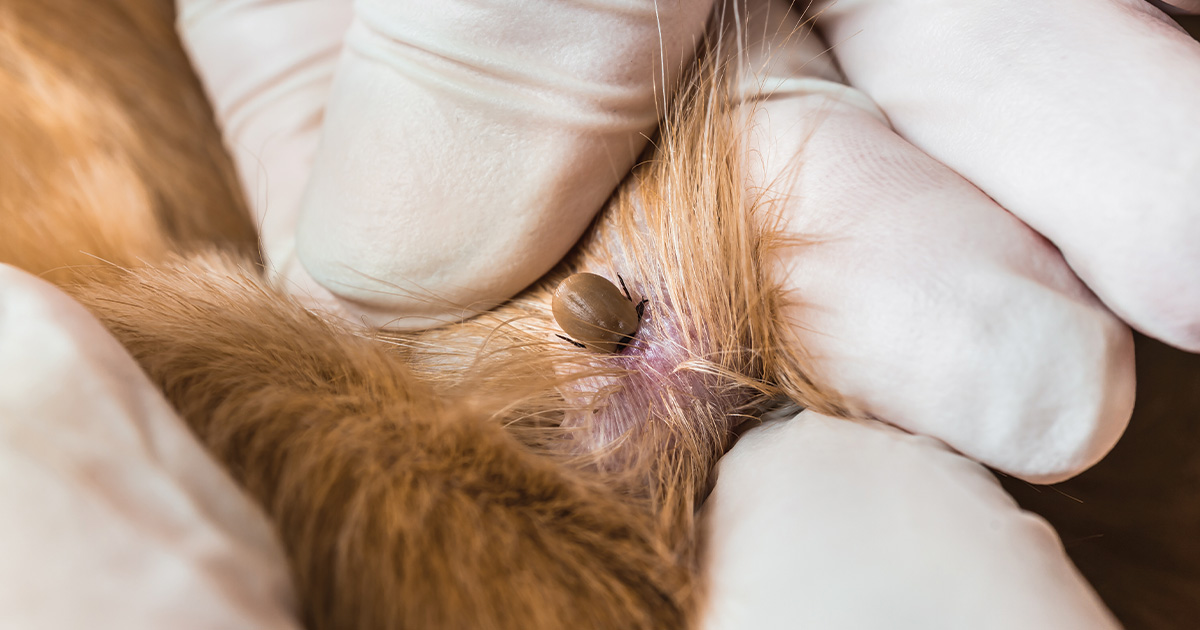What Waterfowl Hunters Need to Know about Ticks
Protect yourself and your retriever from tickborne illnesses this fall
Protect yourself and your retriever from tickborne illnesses this fall


In the not-too-distant past, the risk of being bitten by a tick harboring potentially deadly pathogens was an afterthought for most Americans. However, Centers for Disease Control and Prevention (CDC) data indicate that the number of people infected with tickborne illnesses has increased dramatically over the past 25 years. Why should waterfowl hunters be concerned about ticks and the diseases they carry? The simple answer is anyone who ventures outdoors should be concerned. In fact, if you mow the lawn, rake leaves, or even take a walk in a suburban park, you are potentially putting yourself at risk.
While they can be found anywhere, ticks prefer tall grass, brush, and wooded areas. The most common species are dog, black-legged (deer), and lone star. Some may harbor bacteria or viruses (or both), which can be transmitted to humans and pets. This occurs when an infected tick bites its host, introducing pathogens into the bloodstream. There are at least 18 different tickborne diseases found in the United States, including Lyme disease, anaplasmosis, Rocky Mountain spotted fever, Powassan virus, babesiosis, ehrlichiosis, rickettsiosis, among others.
“When I grew up, we roamed all over. We’d run around in shorts and tennis shoes in the woods of northern Pennsylvania and never worry about ticks,” says lifelong outdoorsman and University of Georgia forestry professor emeritus Dr. Karl V. Miller. “Now they’re common, and in many areas, they are a serious problem."
What has driven the rapid expansion of the tick population and range? Miller believes that the increased abundance and expansion of white-tailed deer over the past 50 years is at least partially responsible. This is especially the case where deer and human activity overlaps, such as in the suburbs and through outdoor activities like hunting.
“White-tailed deer are a big factor because they are an important host for these ticks. Ticks do bite other animals, of course, but the expansion of whitetails, particularly into the suburbs, has exposed a lot more people,” Miller says. “Any place you have deer; you’re going to have ticks.”
Lyme disease is the most common tickborne disease, but some cases go unreported. According to the CDC, estimates are difficult to derive and reliant on data such as insurance records, which may not accurately represent the entire population.
What are the symptoms?
Symptoms of tickborne illnesses vary, but flu-like symptoms are a very common early indication of an infection. Miller, who has had Rocky Mountain spotted fever and ehrlichiosis, remembers suffering achy joints, feeling run down, and malaise. Some tick bites are associated with a rash as well.
“If you ever feel like you have the summertime flu, for example, you may want to get checked out,” Miller says. “Much of the time, hunting waterfowl won’t directly expose you to ticks, but many waterfowlers also hunt deer and turkeys and do other outdoor activities in the off-season, such as retriever training, working on blinds, walking on dikes, whatever. The odds are much greater that you’ll be exposed in those situations."

Anyone who ventures into the outdoors where ticks are present should protect themselves. Tucked-in long-sleeve shirts and long pants, ideally tucked into boots or socks, offer some protection. Applying products that contain DEET, picaridin, and Oil of Lemon Eucalyptus also helps.
Miller says it’s important to take a hot shower and self-examine for ticks as soon as possible after potential exposure. It also helps to have someone else inspect difficult-to-see areas such as the back and head.
Another good option is to treat boots and clothing with products containing permethrin, which can remain protective after several washings. Some manufacturers even offer permethrin-treated clothing.
Sitka Gear has taken this concept to another level by adding mechanical elements to treated garments, further preventing contact with ticks. “You need a dual path for effective prevention,” says Chris Derrick, product line manager at Sitka Gear, who was instrumental in the development of the Equinox Guard line.
Derrick grew up hunting and fishing in the South and has a degree in forestry from Auburn University, so he is keenly aware of the risks tickborne diseases pose to outdoor enthusiasts. “You’re going to need a mechanical component to prevent ticks from contacting the skin, and a chemical side to knock them down, which means they’re either going to fall off or die,” Derrick explains. “The problem with ticks is they’ll ride home with you, so we added permethrin-based Insect Shield. It is infused for the life of the garment, so you don’t have to re-treat and it has the knock-down effect."
Sitka's Equinox Guard pants feature internal gators that tuck inside socks, which prevent ticks from contacting the skin. The hoody is made of breathable, tightly woven bite-reduction fabric with built-in permethrin Insect Shield and features a long tail for tucking into pants and a mesh facemask. While the series is designed specifically for warm-weather turkey hunting, it is also a great option for early-season goose and teal hunting and any other activity in which ticks and biting insects are encountered.
Dogs are also susceptible to tickborne diseases, and their owners may pick ticks up from their pets as well. This is especially true for hunters and their dogs, who spend a lot of time in tick-infested areas together.
“We don’t worry about mosquitos much other than they are the vector for heartworms. So, as long you have your dog on a heartworm preventative, you’re in good shape,” says Missouri veterinarian Ira McCauley. “But ticks carry some horrible diseases that are super common here in the Midwest. Dogs can get a tick any time of year, but obviously it’s more of an issue during spring, summer, and fall. Here in Missouri, the big three tickborne diseases are ehrlichiosis, Rocky Mountain spotted fever, and Lyme. There are a couple others that aren’t as common."
"Of course, you don’t know your dog has a disease until he is sick," McCauley says. "Tests aren’t perfect, and they can even be misleading. So, if a dog comes in and we suspect a tickborne disease, we treat it with Doxycycline. We see a ton of dogs come through our office that are sick with tickborne diseases, and it can kill them if not treated quickly.”
As far as prevention goes, McCauley prescribes a class of drugs that contain isoxazoline. “The tick must bite for it to work, but they don’t live long enough to transfer the disease. Bravecto, Simparica, and Nexgard are examples of those types of drugs. This new class of drugs also kills fleas as well.”
Tickborne diseases can be incredibly costly and compromise a person’s health and even lead to death. Everyone who spends time in the outdoors, including waterfowl hunters, should take measures to avoid exposure.
Ducks Unlimited uses cookies to enhance your browsing experience, optimize site functionality, analyze traffic, and deliver personalized advertising through third parties. By continuing to use this site, you agree to our use of cookies. View Privacy Policy